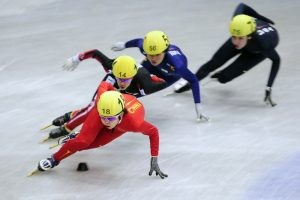Channels
Special Offers & Promotions
PEDs and the Olympics: The Allure of SARMs
 Since the inception of the modern Olympics more than 100 years ago, athletes have engaged in various activities in order to gain a competitive edge—from alcohol to amphetamines to anabolic steroids.
Since the inception of the modern Olympics more than 100 years ago, athletes have engaged in various activities in order to gain a competitive edge—from alcohol to amphetamines to anabolic steroids.
But it wasn’t until the 1968 Summer Olympics in Mexico City (after the creation of the International Olympic Committee (IOC) and the introduction of anti-doping regulations) that the first Olympic athlete tested positive for performance-enhancing drugs (PEDs). During the last fifty years, more than 400 Olympic athletes have tested positive for banned substances. In the last two Winter and Summer Olympics alone, nearly 200 athletes were disqualified or suspended due to testing positive for banned substances. Recently, Russia was banned from sending a team to the 2018 Winter Olympics as the result of state-sponsored use of performance-enhancing drugs leading up to and during the 2014 Winter Olympics.
Over the years, PEDs have come in a variety of options, from steroids to peptide hormones to diuretics, with steroids being the PED of choice. While the anabolic benefits of steroids can help build muscle, reduce fat, increase endurance, and improve recovery time from injuries, the potential androgenic side effects can be significant. Some of the more severe side effects include: shrinking of the testicles, menstrual irregularities, infertility, liver damage, kidney disease, and heart disease.
With the proliferation of PED use has come the search for the next new drug that can not only improve athletic performance with fewer health risks, but that can also avoid detection in drug tests. The next generation of PEDs that are currently being touted are known as selective androgen receptor modulators, or SARMs, which act on hormones in a targeted way that helps to build muscle and shed fat. Unlike traditional steroids that are closely similar in structure to native testosterone or precursor hormones, SARMs may not have similar chemical structures at all.
While SARMs create anabolic results similar to steroids, their androgenic effects can be significantly less. Traditional testosterone-based steroids have an anabolic to androgenic effects ratio of 1:1 (meaning the anabolic benefits are just as likely to occur as the androgenic side effects). SARMs, on the other hand, have shown anabolic to androgenic ratios of 3:1, with up to as much as 90:1. This increased ratio of anabolic benefits with reduced androgenic side effects makes it much more tempting to competing athletes. But even with the improved benefit-to-risk ratio of SARMs, athletes who choose to take them still run the risk of being caught.
In the five decades since the IOC implemented drug testing for the Olympics, not only have the quality and efficacy of performance-enhancing drugs improved, but the methods of testing for PEDs and illicit drugs have become more improved and sophisticated, as well. Analytical techniques such as high-resolution accurate mass spectrometry (HRAM MS) have helped identify newly introduced PEDs and are used for screening for hundreds of other drugs. HRAM MS based on Orbitrap technology offers unmatched accurate mass measurement for identifying the exact masses of compounds in a sample, and resolving interference from complex sample matrices such as blood, urine, hair, and oral fluid.
Instruments such as the Q Exactive™ hybrid quadrupole-Orbitrap MS from Thermo Fisher Scientific provide deeper characterization of drug molecule fragmentation patterns, allow confident metabolite prediction, and better enable anti-doping labs to identify PEDs. The success of these innovative analytical testing systems have helped SARMs become a part of the testing protocol for many athletic sanctioning bodies, including the World Anti-Doping Agency (WADA).
more news from Thermo Fisher Scientific
Media Partners



